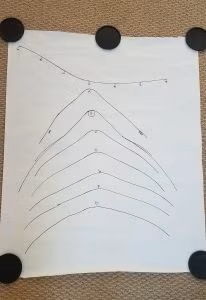7 Steps to Sidesaddle Success
Updated June 7, 2023

Sidesaddle can be an exciting new adventure for you and your horse. If you are looking for a new skill, riding side saddle provides mental and physical challenges for you and your horse. Many have embarked on the journey to learn how to ride sidesaddle and stumbled to find their way to success. If you are considering sidesaddle, these seven steps will help you navigate this fun new experience.
Step 1: Find a Sidesaddle Riding Instructor
Some naturally talented people can just decide one day that they want to do something and do it. Others need a guiding hand to help them learn the ropes. It is critical to receive professional instruction to succeed in this new discipline, even if you are an experienced rider.
Luckily, there are American Sidesaddle Association-certified instructors all around the United States. Finding an instructor that is close by and who you get along with is the most important thing. If you can find an instructor with sidesaddle tack that fits your horse while you train, then even better!
Step 2: Get the Proper Sidesaddle
A sidesaddle must fit both the rider and the horse impeccably. There’s less “wiggle room” in an aside saddle (side-saddle) vs. an astride saddle (saddles for disciplines like jumping, reining, or dressage).

With your instructor's help, you can create a back tracing of your horse, not just the withers but the whole back. Then, transfer it to cardboard and include your measurements. After you get these, you must find a sidesaddle shop, consignment shop, or look online. Depending on your measurements, you may fit several brands. Sidesaddles also come new or professionally restored. The salespeople can be extremely knowledgeable on this, especially since sidesaddles are a niche market.

Step 3: Set Your Goals
Use the S.M.A.R.T. acronym to set your goals: Specific, Measurable, Achievable, Results-focused, and Time-bound. Create a statement for yourself like: “Compete at Training Level in a recognized dressage show riding sidesaddle next spring.” These goals must be attainable, even if you successfully competed through Third Level and earned a USDF Bronze Medal.

Training Level Goals
Remember, riding sidesaddle requires precise aids and is an artful skill. Not only do you have to re-teach your horse every cue, but some cues must also be different for the left and right sides. With only your seat and hands as aids, you will have to start all over from scratch with your horse:
- Halt to walk
- Walk to halt
- Walk to trot
- Trot to walk
- Canter to trot
- Trot to left lead canter
- Trot to right lead canter
First Level Goals
The next goal, First Level, adds these elements:
- Trot to halt
- Halt to trot
- Trot lengthen
- Canter lengthen
- Counter canter left
- Counter canter right
- Leg yield left
- Leg yield right
Many instructors will have you focus mainly on your seat and posture and let you figure out the “language” with your horse. A great tip when you have difficulty with the leg yield left: Use your body as if you still had a right leg on the right side of your horse. Imagining you still have a right leg that will engage your core, hip, and seat bone. This tip will have you move sideways left but also is a great step to moving deeply into corners and bending to the right!
Step 4: Learn as Much as You Can
Immerse yourself in the sidesaddle culture by reading books, attending clinics, joining Facebook groups, and becoming a member of the American Sidesaddle Association and regional clubs. There are many books on learning sidesaddle, its history, and tips from Olympic riders.
Step 5: Sidesaddle Outfits and Accessories
Once you start to progress, you may enter competitions. With sidesaddle competitions comes a whole new outfit for your classes. As you assemble your show clothes, consider what level you are competing at and what will be allowed at each level. Half chaps and paddock boots are permitted if you compete at Training Level. Higher levels will prefer tall boots, but finding a comfortable boot to ride sidesaddle in may take some trial and error.
You will need an extra long baby pad, bridle, and reins matching the saddle. Overall, you should match your horse in your outfit and their tack. This creates a more refined and elegant look for the judges.
Step 6: Commit
When you invest time into your new skill, practicing both aside and astride riding will become hard. You may be better off dedicating your time and efforts to one style of riding for a certain amount of time. Also, rules prohibit competing more than one level apart, so you wouldn’t be able to show sidesaddle at Training Level and astride at Third Level on the same weekend.
Step 7: Think Positive

As you accomplish goals, enjoy the victory. You grew as a rider even if you didn't score as high as you wanted. New experiences make you a more well-rounded equestrian and improves communication between you and your horse.
Whatever your wins are, even if they feel small, celebrate them! As you achieve and celebrate your goals, don’t forget to set new ones. Often winter is a time for riders to set new goals and prepare for the spring and summer show seasons.